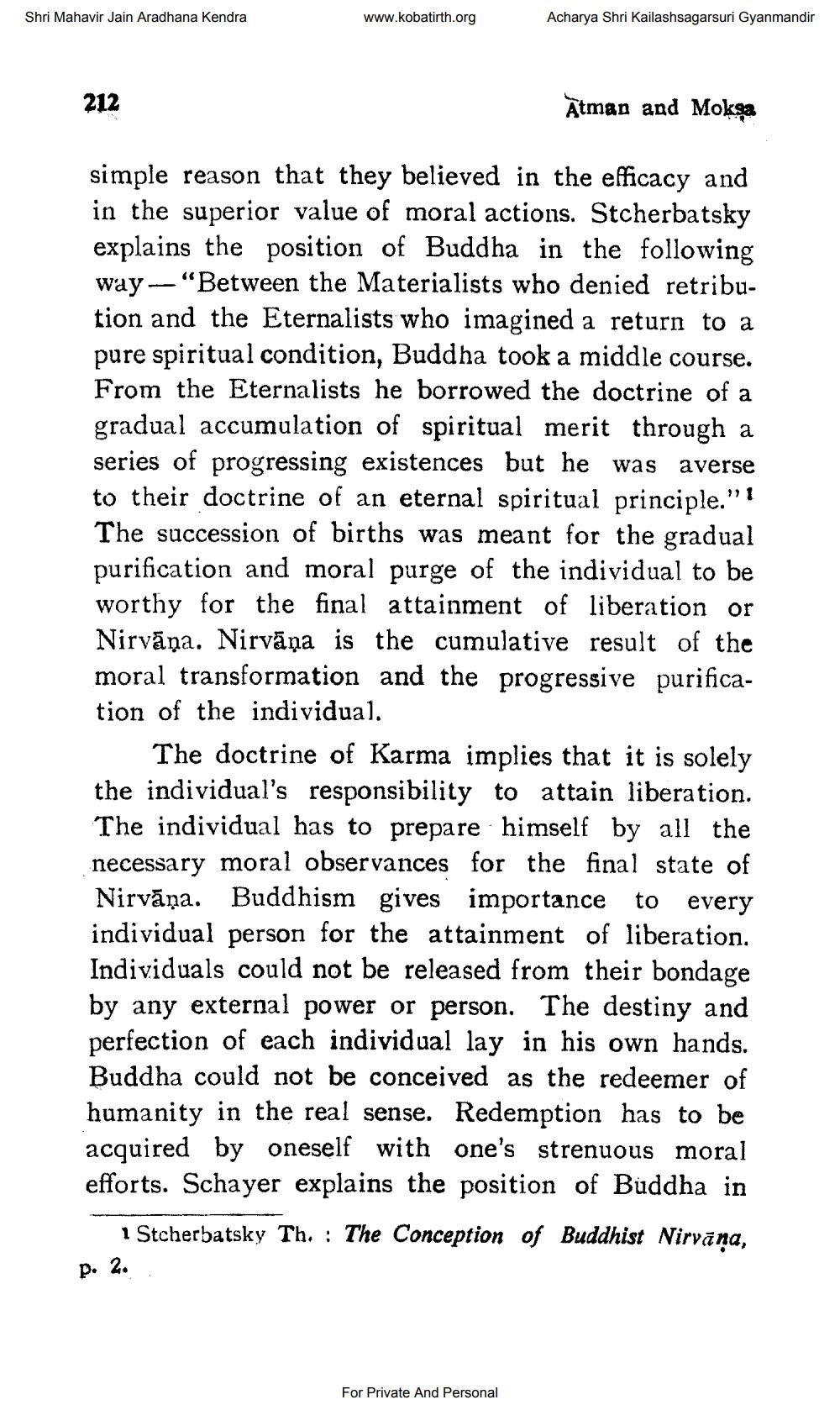________________
Shri Mahavir Jain Aradhana Kendra
www.kobatirth.org
Acharya Shri Kailashsagarsuri Gyanmandir
212
Atman and Moka
simple reason that they believed in the efficacy and in the superior value of moral actions. Stcherbatsky explains the position of Buddha in the following way - "Between the Materialists who denied retribution and the Eternalists who imagined a return to a pure spiritual condition, Buddha took a middle course. From the Eternalists he borrowed the doctrine of a gradual accumulation of spiritual merit through a series of progressing existences but he was averse to their doctrine of an eternal spiritual principle." ! The succession of births was meant for the gradual purification and moral purge of the individual to be worthy for the final attainment of liberation or Nirvāņa. Nirvāṇa is the cumulative result of the moral transformation and the progressive purification of the individual.
The doctrine of Karma implies that it is solely the individual's responsibility to attain liberation. The individual has to prepare himself by all the necessary moral observances for the final state of Nirvāņa. Buddhism gives importance to every individual person for the attainment of liberation. Individuals could not be released from their bondage by any external power or person. The destiny and perfection of each individual lay in his own hands. Buddha could not be conceived as the redeemer of humanity in the real sense. Redemption has to be acquired by oneself with one's strenuous moral efforts. Schayer explains the position of Buddha in
1 Stcherbatsky Th. : The Conception of Buddhist Nirvāna, p. 2.
For Private And Personal




